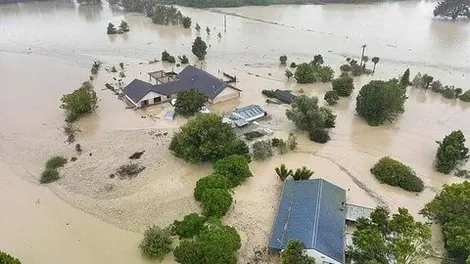Hec-Hms-Tutorial Attenuation/Stormwater Neutrality Modelling
Hydrological neutrality
What you'll learn
Stormwater Design/Modelling
Climate Channge
Stormwater Management
HEC-HMS
Civil Engineering

Requirements
Basic Understanding of Hydrology
Basic Understanding of Stormwater Management
Description
In simple terms stormwater neutrality means that the peak flow rate of stormwater that discharges from a site after it is developed is not greater than the peak flow rate of stormwater runoff prior to development.Often as part of developing or building on a site, grassed (permeable) areas are replaced with sealed (impermeable) areas, such as driveways, buildings, roofs and decks.
This change in surface from permeable to impermeable increases the amount (and speed) of stormwater that will run off these areas.For small residential developments that require stormwater neutrality, Managing Stormwater Runoff is an easy to read guideline that provides information and guidance regarding why stormwater control is required and four options to achieve stormwater neutrality.
Often stormwater neutrality is achieved by the use of a system which holds back or detains the stormwater discharge from the site, and only allows a slow release of the stormwater at a rate that is no more than the sites original discharge.Commonly the stormwater that is held back or detained is stored in a (detention) tank, which has a controlled outlet (orifice).
There are a large number of detention tank products available with above ground or below ground options depending on the situation and preference. Oversized pipes and ponds are also used to achieve stormwater neutrality.This course provided a simple method on how to model stormwater neutrality for a proposed development
Overview
Section 1: PROCESS TO FOLLOW TO OBTAIN RAINFALL DATA AND PROCESSING INTO HYETOGRAPHS
Lecture 1 PROCESS TO FOLLOW TO OBTAIN RAINFALL DATA AND PROCESSING INTO HYETOGRAPHS
Section 2: CREATING THE HEC-HMS MODEL
Lecture 2 HEC MODEL PART 1
Lecture 3 HEC MODEL PART 2
Section 3: EXTRA LECTURES
Lecture 4 TYPICAL MODEL OF STORMWATER NUETRALITY
Lecture 5 EXAMPLE STORMWATER NUETRALITY REPORT
Intermediate : Civil Engineer/ Water Engineers (Stormwater),Geologists
Published 10/2024
MP4 | Video: h264, 1920x1080 | Audio: AAC, 44.1 KHz
Language: English | Size: 532 MB | Duration: 1h 2m
Download
*
Hydrological neutrality
What you'll learn
Stormwater Design/Modelling
Climate Channge
Stormwater Management
HEC-HMS
Civil Engineering

Requirements
Basic Understanding of Hydrology
Basic Understanding of Stormwater Management
Description
In simple terms stormwater neutrality means that the peak flow rate of stormwater that discharges from a site after it is developed is not greater than the peak flow rate of stormwater runoff prior to development.Often as part of developing or building on a site, grassed (permeable) areas are replaced with sealed (impermeable) areas, such as driveways, buildings, roofs and decks.
This change in surface from permeable to impermeable increases the amount (and speed) of stormwater that will run off these areas.For small residential developments that require stormwater neutrality, Managing Stormwater Runoff is an easy to read guideline that provides information and guidance regarding why stormwater control is required and four options to achieve stormwater neutrality.
Often stormwater neutrality is achieved by the use of a system which holds back or detains the stormwater discharge from the site, and only allows a slow release of the stormwater at a rate that is no more than the sites original discharge.Commonly the stormwater that is held back or detained is stored in a (detention) tank, which has a controlled outlet (orifice).
There are a large number of detention tank products available with above ground or below ground options depending on the situation and preference. Oversized pipes and ponds are also used to achieve stormwater neutrality.This course provided a simple method on how to model stormwater neutrality for a proposed development
Overview
Section 1: PROCESS TO FOLLOW TO OBTAIN RAINFALL DATA AND PROCESSING INTO HYETOGRAPHS
Lecture 1 PROCESS TO FOLLOW TO OBTAIN RAINFALL DATA AND PROCESSING INTO HYETOGRAPHS
Section 2: CREATING THE HEC-HMS MODEL
Lecture 2 HEC MODEL PART 1
Lecture 3 HEC MODEL PART 2
Section 3: EXTRA LECTURES
Lecture 4 TYPICAL MODEL OF STORMWATER NUETRALITY
Lecture 5 EXAMPLE STORMWATER NUETRALITY REPORT
Intermediate : Civil Engineer/ Water Engineers (Stormwater),Geologists
Published 10/2024
MP4 | Video: h264, 1920x1080 | Audio: AAC, 44.1 KHz
Language: English | Size: 532 MB | Duration: 1h 2m
Download
*